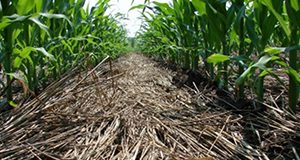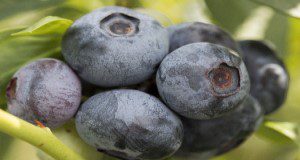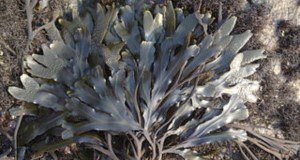Organic farming is one of the fastest-growing segments of the agricultural industry in the United States and in Florida. Conservation tillage is often employed to reduce soil erosion, improve physical and biological properties of soil, and increase water use efficiency. This 5-page article aims to provide recommendations to row crop farmers who wish to implement conservation tillage practices during their transition to a certified organic system. Written by D. L. Wright, J. Moyer, D. Treadwell, I. M. Small, and S. George, and published by the UF/IFAS Agronomy Department, revised November 2020.
https://edis.ifas.ufl.edu/ag246
Category: Organic
Organic Blueberry Production in Florida
There is a growing market in the United States and globally for fresh fruits and vegetables with reported health-enhancing properties. This includes blueberries, which are high in antioxidants and have been reported to improve heart health and contain anticancer properties. Fresh-market blueberry sales (conventional and organic) increased by 27% between 2013 and 2017, and that trend is expected to continue. In addition, there is an increasing level of consumer interest in organically grown produce (for environmental conservation, taste, and other perceived benefits), for which some consumers are willing to pay a premium over the price for a conventionally produced crop. This new 8-page publication of the UF/IFAS Horticultural Sciences Department discusses various aspects of organic blueberry production in Florida and is intended for use by those currently using or interested in pursuing organic production. Written by Douglas A. Phillips, Peter J. Dittmar, Philip F. Harmon, Oscar E. Liburd, Danielle D. Treadwell, and Jeffrey G. Williamson.
https://edis.ifas.ufl.edu/hs1400
Plant Biostimulants: Definition and Overview of Categories and Effects
This new 4-page article provides an overview of a group of crop production materials termed “plant biostimulants,” which are frequently promoted as environment-friendly alternatives to chemical-based products. It explains their regulatory status and presents an overview of the most popular materials (e.g., beneficial fungi, seaweeds, and silicon) and their effects on plants. Written by Ute Albrecht and published by the UF/IFAS Horticultural Sciences Department.
http://edis.ifas.ufl.edu/hs1330
Floridian Consumer Perceptions of Local versus Organic Ornamental Plants
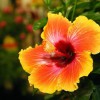 Horticultural consumers in Florida are interested in local and organically produced plants. But these terms can mean different things in different regions. UF/IFAS researchers conducted a survey last summer which suggests that consumers in central Florida define local as plants that are grown near where they are sold and identify the most important local benefits as product safety, quality, and community support. Organic plants are perceived as requiring fewer chemical additives and being healthier for the environment. The importance of these traits varies by plant type. This 5-page fact sheet was written by Hayk Khachatryan and Alicia Rihn, and published by the UF Department of Food and Resource Economics, February 2015.
Horticultural consumers in Florida are interested in local and organically produced plants. But these terms can mean different things in different regions. UF/IFAS researchers conducted a survey last summer which suggests that consumers in central Florida define local as plants that are grown near where they are sold and identify the most important local benefits as product safety, quality, and community support. Organic plants are perceived as requiring fewer chemical additives and being healthier for the environment. The importance of these traits varies by plant type. This 5-page fact sheet was written by Hayk Khachatryan and Alicia Rihn, and published by the UF Department of Food and Resource Economics, February 2015.
http://edis.ifas.ufl.edu/fe964
Yellowmargined Leaf Beetle: A Pest of Cole Crops
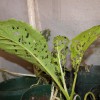 The yellowmargined leaf beetle is a pest of cole or cruciferous crops that is native to South America. Since first reported in Mobile, Alabama, in 1947, the beetle has spread throughout the Gulf Coast from Texas to Florida and up into Georgia and North Carolina. It has also been reported from Illinois and California. Not considered a major pest in conventionally grown cruciferous crops because it is susceptible to a wide range of insecticides, it poses a significant threat to the growing organic industry in the southeastern United States. It is a particular problem on Asian greens such as mizuna, mibuna, and napa cabbage, as well as on other high-value cruciferous crops like turnip, mustard, and watercress. This 4-page fact sheet was written by Elena M. Rhodes and and Oscar E. Liburd, and published by the UF Department of Entomology and Nematology, September 2014.
The yellowmargined leaf beetle is a pest of cole or cruciferous crops that is native to South America. Since first reported in Mobile, Alabama, in 1947, the beetle has spread throughout the Gulf Coast from Texas to Florida and up into Georgia and North Carolina. It has also been reported from Illinois and California. Not considered a major pest in conventionally grown cruciferous crops because it is susceptible to a wide range of insecticides, it poses a significant threat to the growing organic industry in the southeastern United States. It is a particular problem on Asian greens such as mizuna, mibuna, and napa cabbage, as well as on other high-value cruciferous crops like turnip, mustard, and watercress. This 4-page fact sheet was written by Elena M. Rhodes and and Oscar E. Liburd, and published by the UF Department of Entomology and Nematology, September 2014.
http://edis.ifas.ufl.edu/in1049
Techniques for Melon Grafting
Grafting as a cultural practice for controlling soilborne diseases and improving abiotic stress tolerance has been widely used in vegetable production in many areas of Asia and Europe. Interest in vegetable grafting has been growing in the United States in recent years, as well. Cost, along with the desire to customize scion cultivars and the need to produce organic transplants, has led many small and organic growers to choose to graft plants by themselves. To help growers who are interested in grafting melon plants achieve a high graft survival rate, this 5-page fact sheet introduces commonly used grafting techniques and their application in specific circumstances. Written by Wenjing Guan and Xin Zhao, and published by the UF Department of Horticultural Sciences, December 2014.
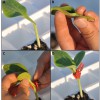 fl.edu/hs1257>http://edis.ifas.ufl.edu/hs1257
fl.edu/hs1257>http://edis.ifas.ufl.edu/hs1257
Intercropping, Crop Diversity and Pest Management (ENY862/IN922)
Growing different crops in the same field and/or planting different crops on the same plot during different times of the year can reduce insect pest populations, increasing beneficial insects, and suppress weeds. In addition, non-crop plants such as weeds, cover crops, and habitat plantings can be combined in space and time to influence numbers of pest and beneficial arthropods on the main crop. This 7-page fact sheet was written by Hugh A. Smith and Oscar E. Liburd, and published by the UF Department of Entomology and Nematology, February 2012.
http://edis.ifas.ufl.edu/in922
Growing Heirloom Tomato Varieties in Southwest Florida (HS921/HS174)
Heirloom tomatoes have seen a rebirth in popularity because of increasing demand for fresh, fully ripe, tasty tomatoes. A tomato must meet three criteria to be considered an heirloom variety: The variety must be reproduced by seed, must have been cultivated for more than 50 years, and must have a history. Heirloom tomatoes are known for their singular taste, shape, and color, which include purple, orange, and yellow, in addition to the common red tomatoes. This 9-page fact sheet was written by Monica Ozores-Hampton, Charles S. Vavrina, and Aline Coelho Frasca, and published by the UF Department of Horticultural Sciences, February 2012.
http://edis.ifas.ufl.edu/hs174
Sweat Bees, Halictid Bees, Halictidae (Insecta: Hymenoptera: Halictidae) (EENY499/IN897)
 Sweat bees are very important pollinators for many wildflowers and crops, including stone fruits, pomme fruits, alfalfa and sunflower. Sweat bee populations can be encouraged with wildflower plantings and by providing nesting areas. Halictids typically nest in bare soil located in a sunny location. Minimum tillage and insecticide use will help to increase populations of Halictidae and other soil nesting bees. Learn more about this diverse family of bees in this 5-page fact sheet was written by Katie Buckley, Catherine Zettel Nalen, and Jamie Ellis, and published by the UF Department of Entomology and Nematology, August 2011.
Sweat bees are very important pollinators for many wildflowers and crops, including stone fruits, pomme fruits, alfalfa and sunflower. Sweat bee populations can be encouraged with wildflower plantings and by providing nesting areas. Halictids typically nest in bare soil located in a sunny location. Minimum tillage and insecticide use will help to increase populations of Halictidae and other soil nesting bees. Learn more about this diverse family of bees in this 5-page fact sheet was written by Katie Buckley, Catherine Zettel Nalen, and Jamie Ellis, and published by the UF Department of Entomology and Nematology, August 2011.
http://edis.ifas.ufl.edu/in897
Predatory Stink Bug, Alcaeorrhynchus grandis (Dallas) (Hemiptera: Pentatomidae) (EENY165/IN322)
Sometimes called the giant strong-nosed stink bug, this very large (20 mm) predatory stink bug occurs in several row crops and preys on other insects, especially lepidopterous larvae. The stages in the life cycle are presented here so that they can be identified in the field. This 3-page fact sheet was written by David B. Richman and Frank W. Mead, and published by the UF Department of Entomology and Nematology, March 2011.
http://edis.ifas.ufl.edu/in322
HS1164 Microgreens: A New Specialty Crop
HS1164, a 3-page illustrated fact sheet by Danielle D. Treadwell, Robert Hochmuth, Linda Landrum, and Wanda Laughlin, provides an overview of this new type of market crop and its production. Includes references. Published by the UF Department of Horticultural Sciences, May 2010.
http://edis.ifas.ufl.edu/hs1164
HS981/HS227 Seed Production and Seed Sources of Organic Vegetables
Revised! HS981, a 12-page report by Jennifer Bonina and Daniel J. Cantliffe, is a guide to organic seed production in Florida. Includes references and a list of organic, open-pollinated, and heirloom seed suppliers. Published by the UF Departrment of Horticultural Sciences, November 2009.
http://edis.ifas.ufl.edu/HS227
HS1148/HS396 Guide for Maintaining the Quality and Safety of Organic Vegetables and Melons During Harvest and Handling Operations
HS-1148, a 7-page fact sheet by Steven A. Sargent and Danielle Treadwell, highlights practical guidelines to assist growers and handlers of organic vegetables and melons to minimize losses during harvest and handling operations. Differences in recommendations between crops grown using organic methods and conventional production methods are noted. Includes references. Published by the UF Department of Horticultural Sciences, March 2009.
http://edis.ifas.ufl.edu/HS396
HS-1142/HS390 Annual Cover Crops in Florida Vegetable Systems Part 3. Buying and Sourcing
HS-1142, an 8-page illustrated fact sheet by Danielle Treadwell, Waldemar Klassen, Michael Alligood and Stephanie Shewey, is part three of the three-part Annual Cover Crops in Florida Vegetable Systems series. It presents points to consider when purchasing cover crop seeds and provides contact information for cover crop seed retailers and wholesalers. Includes references and contact information for US retailers of cover crop seed and rhizobium inoculant. Published by the UF Department of Horticultural Sciences, March 2008.
http://edis.ifas.ufl.edu/HS390
FCS8872/FY1062 Minimizing Food Safety Hazards for Organic Growers
FCS-8872, a 9-page fact sheet by Amy Simonne and Danielle Treadwell, integrates
the key requirements of the Food and Drug Administration Guide to Minimize Microbial Food Safety Hazards for Fresh Fruits and Vegetables (FDA GAPs) and the USDA National Organic Program (NOP) in order to emphasize the areas in which producers can most significantly reduce the food safety risk for their consumers.
http://edis.ifas.ufl.edu/FY1062
FE732/FE732 Economics of the Organic Food Industry in Florida
FE732, an 8-page illustrated fact sheet by Thu-Vi Nguyen, Allen Wysocki, and Danielle Treadwell, delivers an overview of the organic industry in Florida, covering the definition of organic, requirements for organic certification, issues in the Florida organic industry, and major market outlets for organic products. Includes references. Published by the UF Department of Food and Resource Economics, September 2008.
http://edis.ifas.ufl.edu/FE732
HS1146/HS397 Understanding the ‘USDA Organic’ Label
HS-1146, a 6-page illustrated fact sheet by Danielle D. Treadwell and Mickie E. Swisher, briefly outlines the history of the USDAs National Organic Program (NOP), summarizes for consumers the benefits of government regulation of organic food products, and provides a guide for interpreting labels on products with organic ingredients. Includes references. Published by the UF Department of Horticultural Sciences, August 2008.
http://edis.ifas.ufl.edu/HS397
PP254/PP170 Organic Management of Vegetable Diseases, Part II: Foliar Pathogens
PP-254, a 6-page fact sheet by Amanda Gevens and Gary Vallad, emphasizes the management of foliar disease and serves as a
guide to assist growers in selecting strategies to manage disease in a sustainable system. Published by the UF Department of Plant Pathology, July 2008.
http://edis.ifas.ufl.edu/PP170
PP255/PP171 Host-Plant Resistance and Management of Bacterial Spot of Pepper
PP-255, a 3-page illustrated fact sheet by Ken Pernezny, Jeff Jones, Russell Nagata, and Nikol Havranek, describes the developments in the campaign to develop cultivars resistant to Xanthomonas euvesicatoria. Published by the UF Department of Plant Pathology, June 2008.
http://edis.ifas.ufl.edu/PP171
ENY058/NG047 Nematode Management in Organic Agriculture
ENY-058, a 9-page illustrated fact-sheet by Romy Krueger and Robert McSorley, provides information on plant parasitic nematodes causing damage in organic agriculture and introduces methods for their management. Includes references. Published by UF Department of Entomology and Nematology, January 2008.
http://edis.ifas.ufl.edu/NG047
